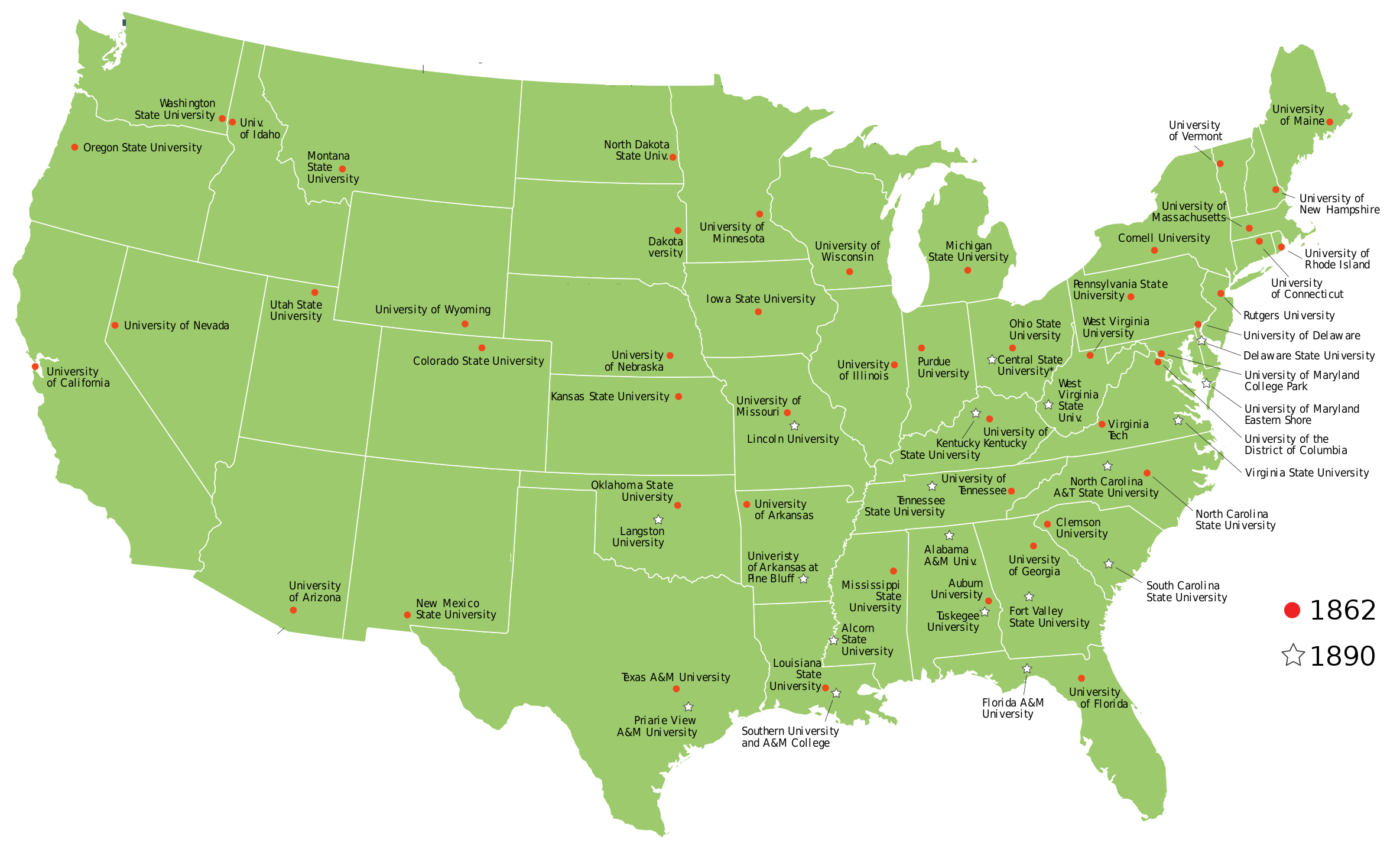
Land Grant
Colleges under the Morrill act (1862)
The first Morrill Act allocated profits from the sale of 30,000 acres of federal land per Congressman in the western States to endow state-based institutions of higher learning. [It is acknowledged today that most of this land was taken from Indigenous Peoples without compensation]. Recognizing a shift in educational needs in response to the Industrial Revolution and changes in social structure, these colleges would promote learning in the "agricultural and mechanical arts" (hence "A&M" in several names), in contrast to the traditional liberal arts education of established private universities (e.g., Harvard or Yale Colleges). This mission was in contrast to the historic practice of higher education with a focus on a liberal arts curriculum. Extension of the Act in 1890 to states of the former Confederacy required them to demonstrate non-racial admissions policies. A 1994 amendment extends land-grant status to a number of Indigenous colleges.
Most of the land-grant colleges evolved full-spectrum curricula, and are among the world's leading educational and research institutions. For example, the University of California system is the world's largest university, currently comprising 12 campuses from its origin at Berkeley in 1868.
All text material
©2021 by Steven M. Carr